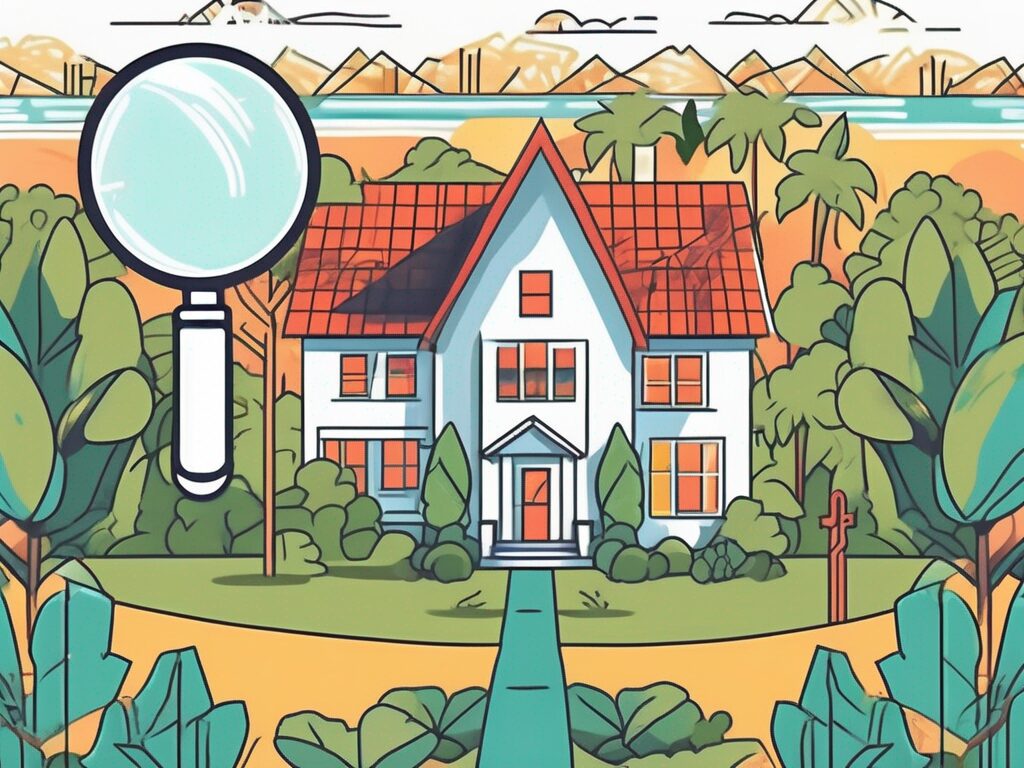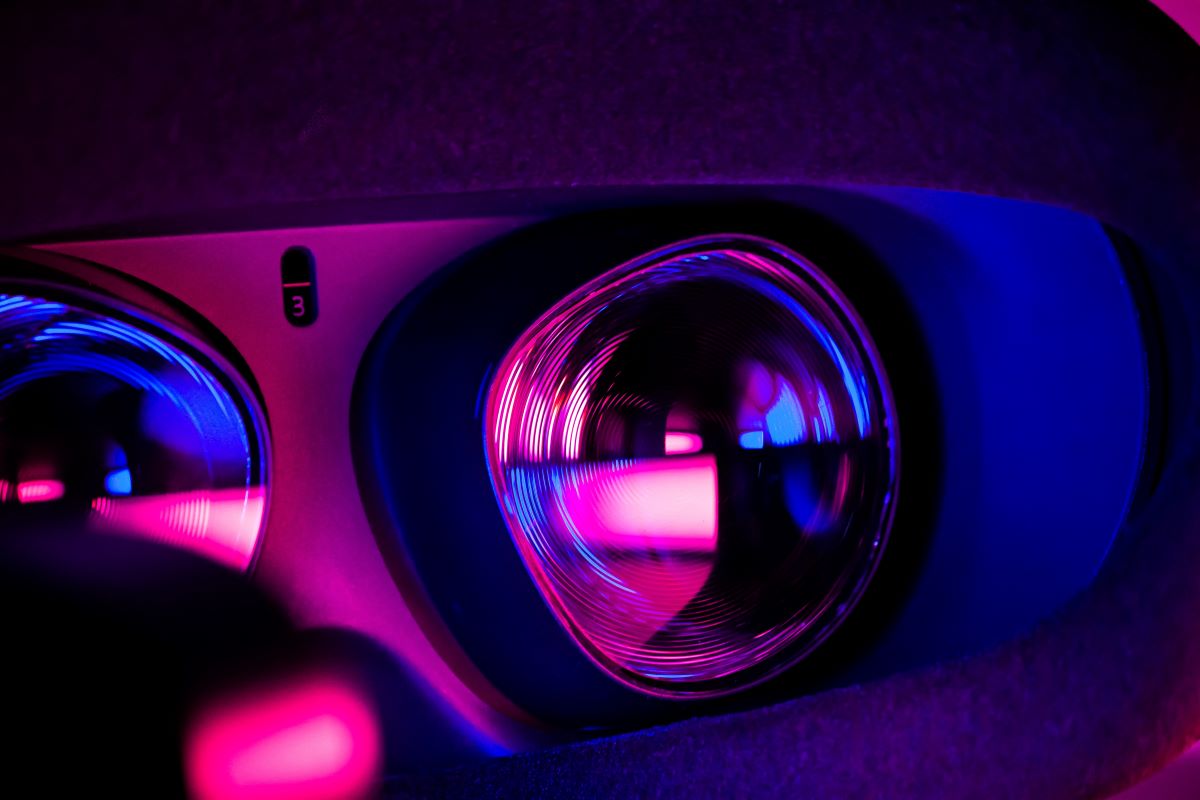

Agent A-Team or Solo Superhero? Finding the Right Real Estate Partner for Your Selling Journey in Wildwood Florida
When it comes to selling your home in Wildwood, Florida,…
January 29, 2024
Are you tired of scrolling through endless online listings of properties without getting a true sense of what they look like? Are you frustrated with the limited amount of information and visual representations available on traditional property listing sites? Virtual reality technology is revolutionizing the way homes are bought and sold by providing an immersive experience that brings properties to life. In this article, we will explore the power of virtual reality in home selling, how it’s changing the real estate industry, and what benefits it brings to buyers and sellers alike.
Virtual reality (VR) is a computer-generated simulation of a three-dimensional environment that can be interacted with in a seemingly real or physical way. In home selling, VR technology allows potential buyers to virtually tour a property and experience it in a way that feels like they’re actually there. It’s achieved through the use of specialized headsets, cameras, and software that creates a realistic representation of a property that can be explored from all angles.
Virtual reality is changing the real estate industry in several ways. Here are some of the most significant changes:
Virtual reality allows real estate agents to show properties to potential buyers without having to be physically present. This saves time and allows agents to show more properties in a shorter amount of time. Additionally, buyers can tour properties at their convenience without having to coordinate schedules with agents or homeowners.
Virtual reality is particularly helpful for buyers who live far away from the property they’re interested in purchasing. It eliminates the need for long-distance travel and allows buyers to tour properties from the comfort of their own homes. This means that buyers are no longer limited to properties in their immediate area, opening up a wider range of options for them to consider.
Virtual reality allows buyers to get a better sense of what a property looks like and feels like in real life. It provides an immersive experience that traditional photos and videos cannot replicate. Buyers can get a sense of the property’s layout, size, and features, and can even visualize how their furniture would fit in the space.
Virtual reality provides a more engaging and interactive experience for buyers. They can explore properties at their own pace and can revisit rooms or areas that they’re particularly interested in. This leads to a more memorable experience and can help buyers make more informed decisions.
Virtual reality provides several benefits to both buyers and sellers. Let’s take a closer look at some of these benefits:
Virtual reality saves time for both buyers and sellers. Buyers can tour multiple properties in a shorter amount of time, and sellers don’t have to spend as much time preparing their homes for physical showings.
Virtual reality can save money for both buyers and sellers. Buyers don’t have to travel to tour properties, saving on transportation and lodging costs. Sellers can save money on staging and preparing their homes for showings.
Virtual reality provides more convenience for both buyers and sellers. Buyers can tour properties at their convenience without having to coordinate schedules with agents or homeowners. Sellers can avoid disruptions to their daily lives by not having to prepare their homes for showings.
Virtual reality allows buyers to make more informed decisions by providing a more immersive and realistic experience of properties. They can get a better sense of a property’s layout, size, and features, which can help them make a more informed decision about whether to purchase the property.
Virtual reality allows properties to reach a broader market by eliminating geographical barriers. Buyers can tour properties from anywhere in the world, opening up the potential for international buyers who may not have had the opportunity to view a property in person.
Virtual reality provides a competitive advantage for real estate agents and sellers. It demonstrates that they are willing to invest in new technology and provide a more innovative and engaging experience for potential buyers.
Virtual reality can reduce the risk of properties being damaged during showings. Buyers can tour properties virtually, minimizing the number of physical showings needed. This can also reduce the risk of exposure to COVID-19 during the pandemic.
Virtual reality in home selling works by creating a realistic 3D model of a property. This is achieved through the use of specialized cameras that capture a series of images of a property from different angles. The images are then stitched together to create a 3D model that can be viewed through a virtual reality headset.
To create a virtual reality tour of a property, a real estate agent or photographer will typically use a 360-degree camera to capture images of every room in the house. These images are then stitched together to create a 3D model of the property. Buyers can then view the property using a virtual reality headset, allowing them to move around the space and explore it from different angles.
There are several types of virtual reality in home selling. Here are some of the most common:
Fully immersive virtual reality provides a completely immersive experience for buyers. Buyers wear a virtual reality headset that blocks out the real world and transports them to a virtual representation of the property. They can move around the property and interact with it as if they were actually there.
Augmented reality allows buyers to view a property in the real world using their smartphone or tablet. They can hold up their device and view a virtual representation of the property overlaid on top of the real world. This allows buyers to get a sense of what the property would look like in the context of their surroundings.
Interactive virtual tours allow buyers to navigate a virtual representation of the property using their computer or mobile device. They can click on different rooms or areas of the property to view them in more detail.
Virtual reality can provide a lot of benefits for buyers and sellers, but it’s important to use it effectively. Here are some best practices for using virtual reality in home selling:
To create a realistic virtual reality experience, it’s important to use high-quality images. This means investing in a high-quality camera and taking the time to capture images from every angle.
While virtual reality provides a more immersive experience, it’s still important to provide additional information about the property. This includes information about the property’s features, location, and any potential issues.
Virtual reality can be intimidating for some buyers. Make sure the virtual reality experience is user-friendly and easy to navigate. Provide clear instructions on how to use the virtual reality headset and how to navigate the virtual tour.
Virtual staging can help buyers visualize how a property would look with furniture and decorations. This can be particularly helpful for vacant properties that may be difficult to visualize.
Virtual reality is transforming the way homes are bought and sold. It provides a more immersive and engaging experience for buyers, allowing them to explore properties in a way that traditional photos and videos cannot replicate. It also provides benefits for sellers, including increased efficiency, cost savings, and reduced risk.
As virtual reality technology continues to improve, we can expect to see even more innovative uses of it in the real estate industry. For example, some companies are experimenting with using virtual reality to allow buyers to customize properties before they are built. This could allow buyers to make more informed decisions and create a stronger emotional connection to the property.
Additionally, virtual reality can be used to create virtual neighborhoods or communities, allowing buyers to explore an entire area before deciding where to buy. This can provide a more comprehensive understanding of the local market and help buyers make more informed decisions.
The cost of creating a virtual reality tour of a property can vary depending on the complexity of the property and the quality of the images. Some companies offer virtual reality tours for as little as $200, while others may charge several thousand dollars.
While a virtual reality headset provides the most immersive experience, buyers can also view virtual reality tours on their computer or mobile device.
Virtual reality can be useful for properties at any price point. It provides benefits for both buyers and sellers, regardless of the property’s value.
Yes, virtual reality can be used to sell commercial properties as well. It provides a more immersive and engaging experience for potential tenants or buyers.
One potential downside of using virtual reality in home selling is that it may not provide a completely accurate representation of a property. Buyers may still want to view a property in person before making a final decision. Additionally, virtual reality technology can be expensive to implement, which may be a barrier for some real estate agents or sellers.
Virtual reality is transforming the real estate industry by providing an immersive and engaging experience for buyers. It provides benefits for both buyers and sellers, including increased efficiency, cost savings, and reduced risk. As virtual reality technology continues to improve, we can expect to see even more innovative uses of it in the real estate industry. Real estate agents and sellers who embrace virtual reality will have a competitive advantage in the market and provide a more innovative and engaging experience for potential buyers.


If you want the Richr team to help you save thousands on your home just book a call.

